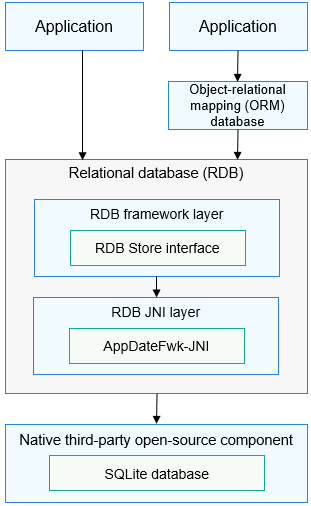RDB Overview
The relational database (RDB) manages data based on relational models. With the underlying SQLite database, the RDB provides a complete mechanism for managing local databases. To satisfy different needs in complicated scenarios, the RDB offers a series of methods for performing operations such as adding, deleting, modifying, and querying data, and supports direct execution of SQL statements.
Basic Concepts
-
RDB
A type of database based on the relational model of data. The RDB stores data in rows and columns. An RDB is also called RDB store.
-
Predicate
A representation of the property or feature of a data entity, or the relationship between data entities. It is mainly used to define operation conditions.
-
Result set
A set of query results used to access the data. You can access the required data in a result set in flexible modes.
-
SQLite database
A lightweight open-source relational database management system that complies with Atomicity, Consistency, Isolation, and Durability (ACID).
Working Principles
The RDB provides a common operation interface for external systems. It uses the SQLite as the underlying persistent storage engine, which supports all SQLite database features.
Default Settings
- The default database logging mode is write-ahead logging (WAL).
- The default database flush mode is Full mode.
- The default shared memory used by the OpenHarmony database is 2 MB.
Constraints
-
A maximum of four connection pools can be connected to an RDB to manage read and write operations.
-
To ensure data accuracy, the RDB supports only one write operation at a time.
